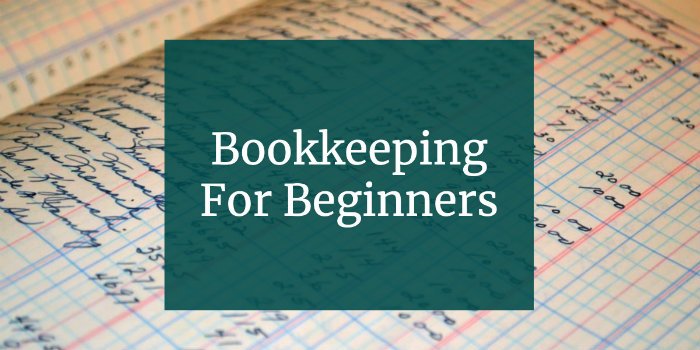Bookkeeping

Financial Statements – Accounting records allow the production of financial statements sometimes referred to as accounts. The financial statements include the balance sheet, income statement, and cash flow statement. Basic bookkeeping is the process of recording all your business transactions to produce a set of accounting records. Bookkeeping is the start of an accounting process which allows you to produce useful accounting information about your sales, expenses, assets, liabilities and equity.
Just because you have more money in your account than you did before, does not mean you’ve earned income. Understand exactly what a financial transaction is and how it effects your business. This course is designed for both new and established small business owners and managers who may be strong in their own fields but want a better understanding of the basic concepts of tracking their company finances as well as students beginning the journey of learning bookkeeping. This occurs when you have sent out goods or carried out work for someone but you have yet to send them a sales invoice.
Financial Statements
For every transaction the total debit entries must equal the total credit entries. Some types of accounts normally carry negative balances, but others normally show positive balances. This can be confusing to a novice bookkeeper. What is bank reconciliation On the income statement, your revenue accounts, such as sales, normally carry a negative balance even though they are good activity for your business. Expenses and cost of goods sold should have positive balances.
As mentioned, it’s not just money in and out. Lenders and investors want to see accurate and complete books for a business before granting loans or raising capital for it. If you rely on outside financing, this is the most important reason to invest time and money in bookkeeping. By opening a new bank account, you can keep your personal finances and your business dealings separate so there’s never any confusion between the two. When it’s time to do your books, you’ll easily know where to find the financial information you need.
Accounts Receivable. If your company sells products or services and doesn’t collect payment immediately you have “receivables” and you must track Accounts Receivable. This is money due from customers, and keeping it up to date is critical to be sure that you send timely and accurate bills or invoices.
This free course, Introduction to bookkeeping and accounting, explains the fundamental rules of double-entry bookkeeping and how they are used to produce the balance sheet and the profit and loss account. However, if you have quite a few accounts receivable (money owed to your business by your customers) or accounts payable (money owed by your business), you may want to consider utilizing a double entry bookkeeping system. Bookkeeping also saves you time. From payroll taxes to managing invoices, efficient bookkeeping smooths out the process of all your business’s financial tasks and keeps you from wasting time tracking down every dollar. Balance sheet.
Double entry bookkeeping is a system of basic bookkeeping in which ledger accounts are maintained for assets, liabilities, capital, revenue, and expenses. https://www.bookstime.com/ The controller is actually a company’s chief accounting officer. He/she is responsible for setting up and maintaining the company’s accounting system.
It would be impossible to do any accounting if one were to skip this step. This is because, through bookkeeping, the company is able to gather the critical information needed to paint a picture of how the company is doing. Sales. The Sales account is where you track all incoming revenue from what you sell.
- Many small business owners will not start right out with a double entry bookkeeping system.
- Trial balance is how you test to be sure your books are in balance before pulling together all of the key information for the financial reports and closing the books for the accounting period.
- If you’re running an agency, business expenses could also include rent for an office, employee wages, and so on.
The main thing to avoid is regularly dipping into the wrong pot, like treating yourself to lunch every week with the business’s money, or covering the rent for your office space with your own funds. This type of activity can increase your legal liability, especially if your business is set up as a sole proprietorship — if your business is ever sued, for example, your personal assets could be at risk.
Recording sales in a timely and accurate manner is critical to knowing where your business stands. Loans Payable. If you’ve borrowed money to buy equipment, vehicles, furniture or other items for your business, this is the account that tracks what’s owed and what’s due. Accounts Payable. No one likes to send money out of the business.
But the more sales and expenditures your business makes, the better your receipt filing system needs to be. Use your summaries to create financial reports that will tell you specific information about your business, such as how much monthly profit you’re making or how much your business is worth at a specific point in time. Depending on the size of your business and amount of sales, you can create your own ledgers and reports, or rely on accounting software.
Our Debits and Credits Chart acts as a reference for these account types. Entry – The recording of a Transaction in an Account in the Accounting Records using Debits and Credits.
Each of your business’s sales and purchases must be backed by some type of record containing the amount, the date, and other relevant information about that sale. You’ll use these to create summaries of your transactions. Online accounting solutions are another option. Internet-based accounting solutions allow multiple users to access company records from any computer with an Internet connection.
Recording entries purely from sums in and out of a bank account is known as cash accounting, but this is only allowed for tax purposes in the smallest of self employed businesses. If you are ready to start your own business, get all the information Management Accounting you need, including tips on accounting and bookkeeping with Nolo’s Quicken Legal Business Pro — a complete business library on your desktop, featuring five Nolo business books, over 140 forms, and a dozen ‘how to’ checklists.
Expenses are all the money that is spent to run the company that is not specifically related https://www.bookstime.com/blog/what-is-cash-flow to a product or service sold. An example of an expense account is Salaries and Wages.


